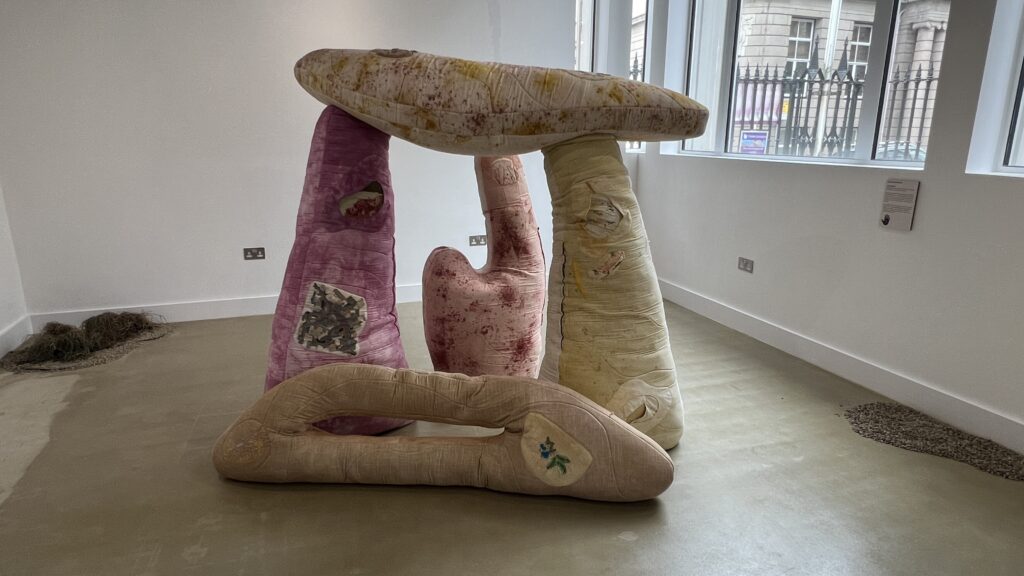I went to visit ArtHouse Jersey for an exhibition named “The Land and Us”. This is an exhibition which was created as a way to reconnect and prioritise Jersey’s ecosystem, whilst exploring the past, present and future habitation of the Island. This exhibition included the work of various photographers such as Alexander Mourant, Hannah Fletcher, Remi Graves, Alice Burnhope and Sam Carvosso and many of the pieces have been created in collaboration with groups such as Youthful Minds, Highlands College, Dementia Jersey, Cheval Roc care home and Hautlieu School. These are some of my favourite pieces which I saw at this exhibition:

This is a recreation of dolmens from when our ancestors were building them 6000 years ago. This structure was created by Alice Burnhope with the use of naturally dyed waste textiles, community embroideries, reclaimed zips, threads, scrim foam and hay. I personally really admire this piece as I think it is amazing how much detail there is when you look closely and the amount of thought that would have had to go into it to ensure that each piece will hold.

This is a piece of sweet chestnut wood which has been engraved by Alexander Mourant, in collaboration with EYECAN. The carving in this wood represents St Martins Village Green and is a sensory piece in which they advise people to feel and imagine they are walking through a landscape.



As you can see here, there were paths which were created around the art gallery in the shape of the Island. These paths were made by Sam Carvosso with materials such as wood, sand, gravel, soil and hoggin. It is said that he chose these materials based on how long it took to walk each section. As you can also see below, he created an elevated area to represent the steep inclines of the North Coast. I really liked this feature of the art gallery as I think that it was a good representation of the nature of the island.


This is a piece which was created by Hannah Fletcher in collaboration with Hautlieu School and it is a chemigram which was made using silver gelatine paper and craic based photographic developer. I personally really like the abstract appearance of this piece and believe it looks like oil spillage, with links with Anthropocene.

These are various species of seaweed which had been pressed and selected by Hannah Fletcher. I really like the look of this piece and was quite surprised as I never knew how many different types of seaweed there were.

At first glance I thought that these were real rocks, however, they have been made by Sam Carvosso and Highlands Art School in Greve de Lecq woods using plaster. In the art gallery, they displayed a film showing how they made these on the trees and then collected moss to decorate them. I really admire the hard work they put into making these and how real they look.
Overall, there was a lot of impressive artwork displayed at this exhibition, my personal favourite definitely being the dolmans as I liked how vibrant and large-scale they were. I also liked how they used recycled materials for many of these pieces and collaborated with local communities/groups.









